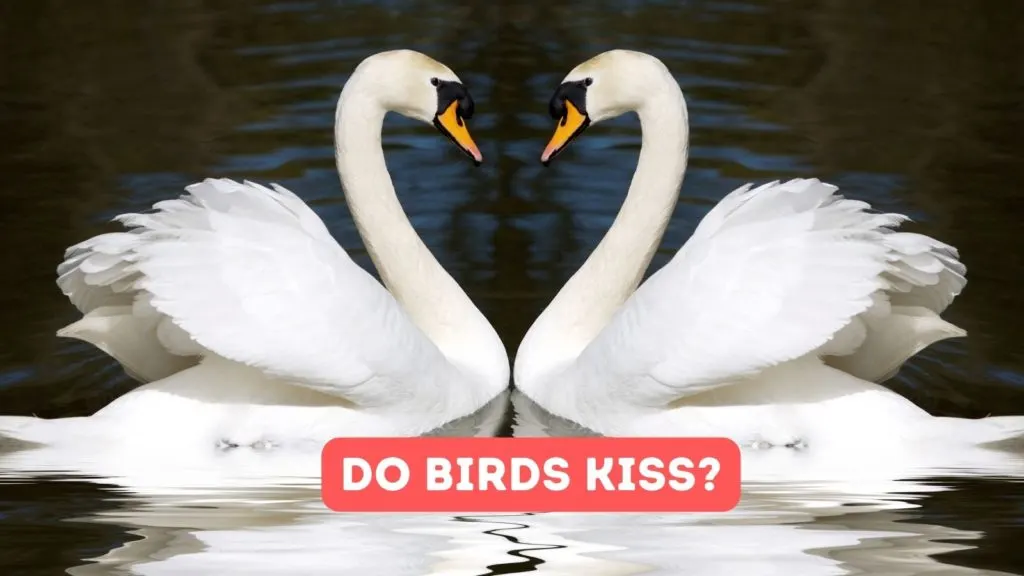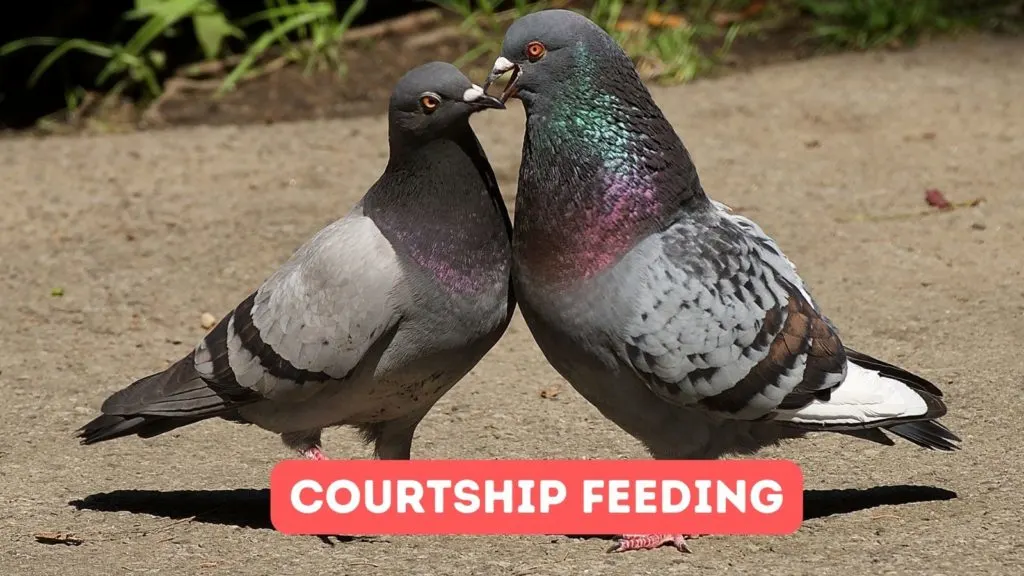The sight of two birds appearing to share a kiss can be a heartwarming scene for bird watchers, evoking images of affection and companionship among our feathered friends. But do birds kiss in the way that we define kissing?
Well, you might be disappointed to hear that, while it may look like birds are sharing a tender moment akin to a human kiss, the behavior usually has more practical purposes in the avian world.

The Meaning Behind the Bird “Kiss”
In birds, what looks like kissing is often a behavior called “allopreening” or “courtship feeding.”
Allopreening refers to the practice of birds grooming each other. It’s a social behavior that helps strengthen bonds between mates or flock members, and it’s also practical, as it helps birds reach areas they can’t groom on their own.
This behavior is common among many bird species, including parrots, cockatoos, and some songbirds.

Courtship Feeding is exactly what it sounds like—a bird, typically the male, feeds the female as part of the mating ritual.
This behavior is seen in many bird species, including pigeons, doves, and eagles. It’s thought to be a way for the male to show his ability to provide food and care for the female and their future offspring.
Which Birds Might “Kiss”?
Several bird species engage in behaviors that might look like kissing, including:
- Parrots and Cockatoos: These birds are known for their strong social bonds and intelligence. Allopreening among these species is common and is a sign of affection and trust.
- Pigeons and Doves: Known for their seemingly monogamous relationships, these birds often engage in courtship feeding, which can look like a kiss.
- Eagles: During courtship, eagles may perform a ritual that includes the male offering food to the female, symbolizing his ability to provide.
- Swans: Though more known for their iconic heart-shaped neck poses, swans also engage in mutual preening that strengthens their lifelong bonds.
Are They Actually Feeding One Another?
In many cases, yes, birds that appear to be kissing are actually engaging in courtship feeding. This behavior is most common during the breeding season when birds are forming pairs and establishing bonds.
It’s a crucial part of the courtship ritual for many species and plays a vital role in mate selection and reproduction.
When is This Behavior Most Common?
Behaviors resembling kissing are most common during the breeding season and can be observed in both the courtship phase and after a pair has bonded.
Allopreening can occur year-round as a way to maintain and strengthen social bonds.
Do Birds “Kiss” Their Young?
Birds do not kiss their young in the way humans might think of kissing.
However, parents do feed their chicks in a manner that might look similar to kissing. This feeding behavior is crucial for the survival of the young birds, as they depend on their parents to provide food until they are old enough to fend for themselves. This direct beak-to-beak feeding is a vital interaction between parent birds and their chicks.
While birds may not kiss in the human sense of the word, their interactions—whether for grooming, courtship, or feeding—are rich with meaning and importance in their world.
The next time you see birds appearing to share a “kiss,” remember, you’re witnessing a special moment of avian social interaction, one that’s fundamental to their survival and well-being.
More Posts You Might Like
How to Make Eggshell Calcium for Birds
- 8 Letter Bird Names - August 14, 2024
- 7 Letter Bird Names - August 14, 2024
- 7 Birds Named After Famous People - July 23, 2024
